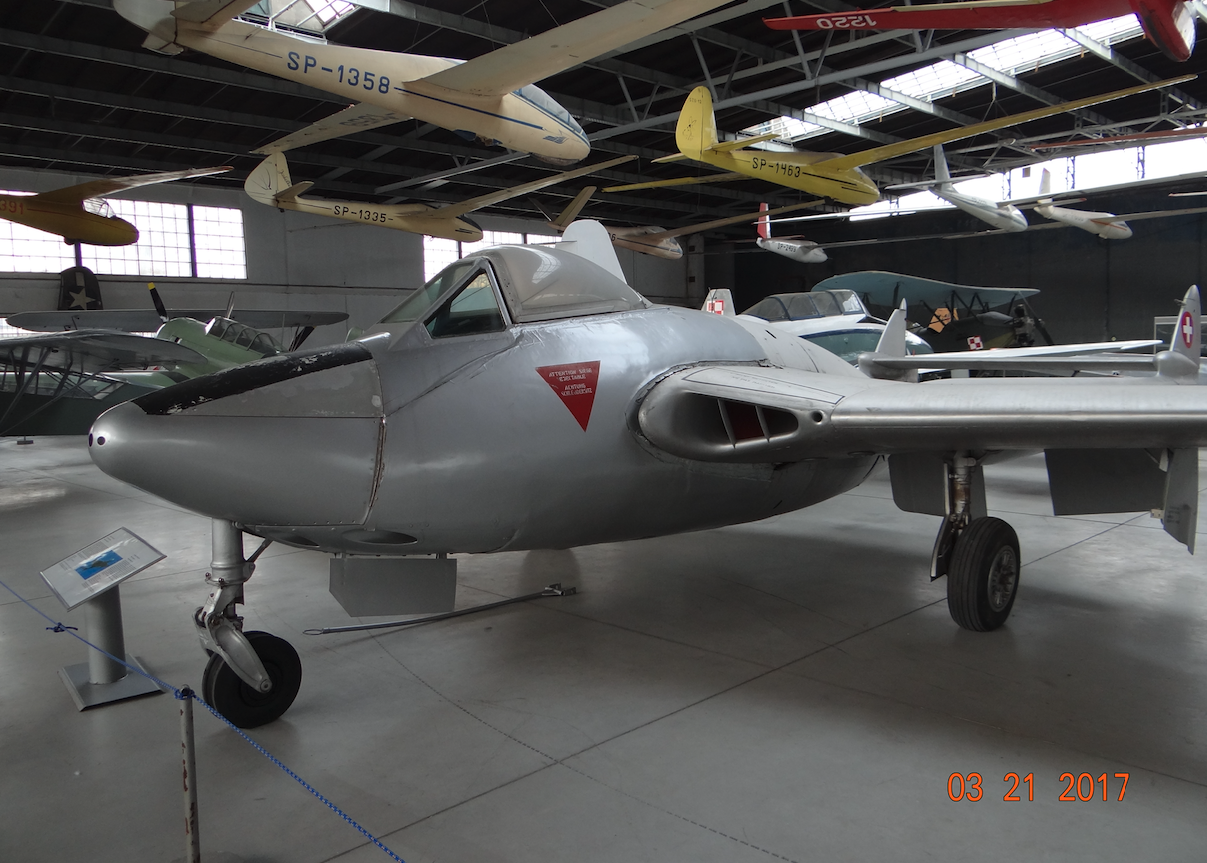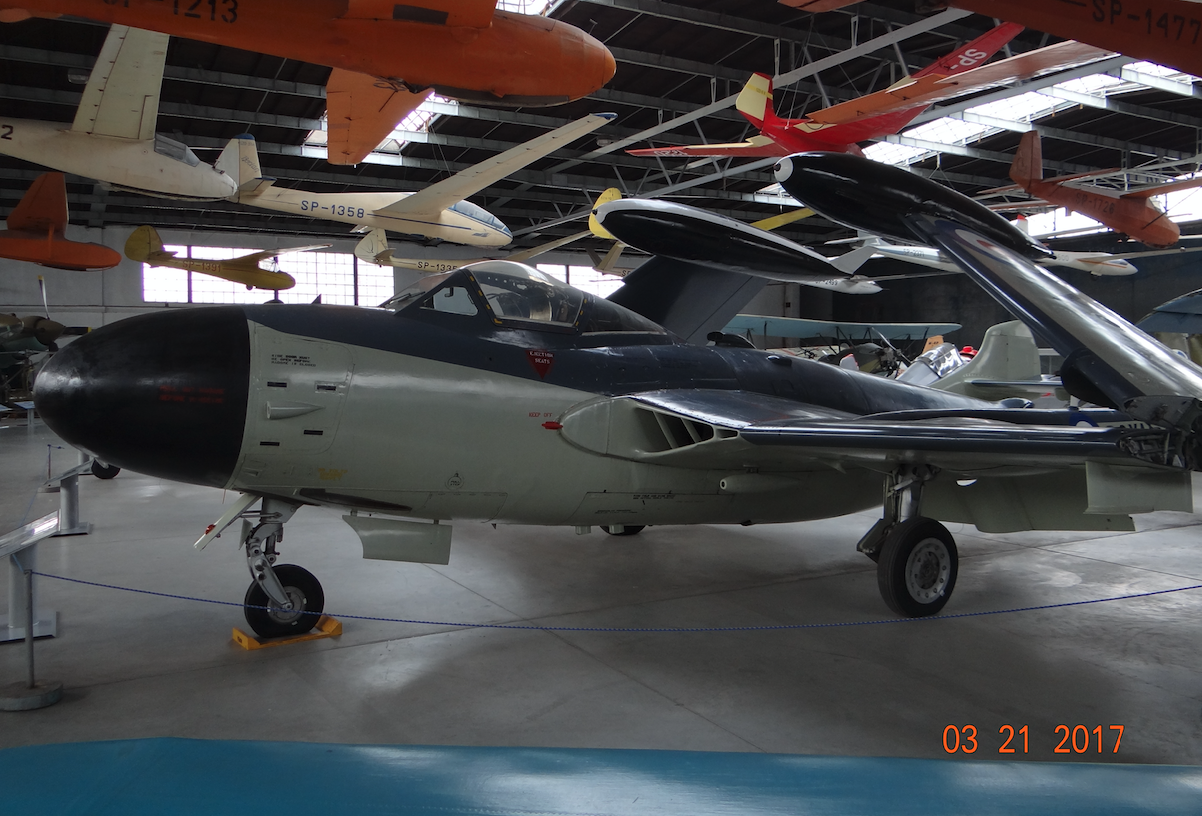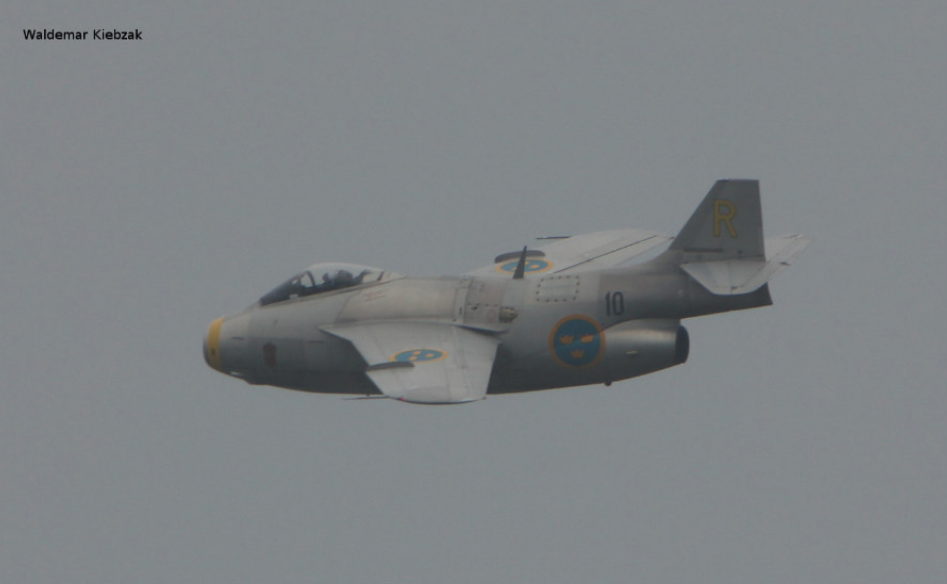More turbojets in the UK
De Havilland Vampire. 1943 year.
The De Havilland Vampire combat aircraft was developed in the UK in parallel with the Gloster Meteor. However, unlike him, it received a power unit consisting of one turbojet engine. The engine was placed in a rudimentary fuselage just behind the crew cabin. The first flight of the De Havilland Vampire plane took place on September 20, 1943.
A single engine hardly ever interrupted the program. But successfully overcoming all the problems and very good performance of the plane, the plane was built in a huge number of about 3,300 pieces. The plane entered service only in March 1946, i.e. after the Second World War. It was in the first line until 1953.
De Havilland Goblin. 1942 year.
The De Havilland Goblin engine was to be the main propulsion of De Havilland Vampire aircraft and other aircraft, such as the Lockheed F-80 Shooting Star. The engines for this aircraft were to be built in the USA as the Allison-Chalmers J36. However, this did not happen. Engineers in the UK encountered several significant issues that extended the construction and testing period.
The engine, in addition to the front inlet to the centrifugal compressor, had 16 pitcher combustion chambers and a single-stage turbine. The motor shaft is supported by two bearings: at both ends of the spool. Unlike the Frank Whittle engines which had three bearings. The arrangement of the two bearings made the renovation much easier. The De Havilland Goblin engine was a compact design. The first start of the De Havilland Goblin engine took place on April 13, 1942. On March 5, 1943, the Gloster Meteor took off with new engines, and on September 26, 1943, the De Havilland Vampire.
The De Havilland Goblin engine starts with a leading air grasp, which consists of ovals inscribed in a circle. Just behind the grip is a single-ended centrifugal compressor. From there, the air is directed to the 16 pitcher combustion chambers. Further on is a 1-stage turbine and a relatively long exhaust nozzle. Depending on the version, the De Havilland Goblin engine has a thrust of 2,300 lbf (10.23 kN) to 3,750 lbf (16.68 kN). In addition to British planes (eg De Havilland DH.108 Swollow), the De Havilland Goblin engine powered American, Italian (FIAT G.80) and Swedish (SAAB 21R) experimental planes. the engine also powered the Bluebirt K.4 water chaser.
Engine data De Havilland Goblin D.H. II D.Gn 27: 107 in. (2.72 m) long, 50 in. (1.27 m) in diameter, weight 703 kg. Fuel aviation kerosene (R.D.E. / F / KER kerosene). 3,000 lbf (13.34 kN) thrust. Compression 3.3: 1. Air flow 27.22 kg / s. Temperature before the turbine 800 degrees C. Fuel consumption 3,720 lb / hr (465 imp gal / hr), (1,687 kg / h) or (2,114 l / h). thrust to weight ratio 1.9 lbf / lb (0.0186 kN / kg).
De Havilland Ghost. 1944 year.
The De Havilland Ghost engine was a pure development of the De Havilland Goblin engine. Initially, it was called Halford H-2. It was the first turbojet engine to be used in civil aviation, specifically for the BOAC carrier. The engine powered such structures as: the combat De Havilland Venom, the communication De Havilland Comet and was licensed in Sweden as the RM-2 for the SAAB J-29 Tunnan.
Description to the photo: The SAAB J-21 Tunnan fighter plane is powered by the De Havilland Ghost engine, which was under license in Sweden as RM-2.
Written by Karol Placha Hetman



